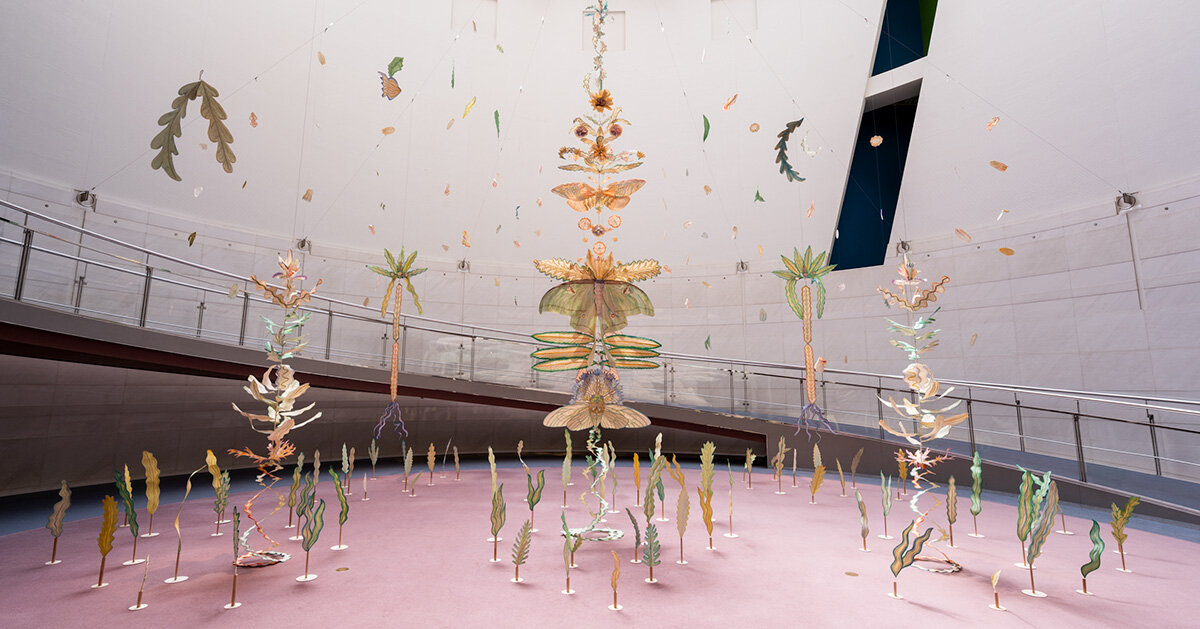mona sugata’s botanical sculptures dwell in quiet flows of life
Mona Sugata’s intricate sculptures are made from cotton fabric, thread, glue, and pigment, materials that hold traces of fragility, heat, and breath. Shaped into botanical forms and infused with an otherworldly quality, her works feel alive in a surreal way. In her latest exhibition, What Resonates Through Us — Echoes in Overtones, on view at Galerie Ovo in Taipei from August 22nd to September 6th, 2025, Sugata presents a series of installations that extend her ongoing exploration of living systems, unseen presences, and the subtle conditions that allow life to take shape. ‘I imagine them as relics quietly resting in an ancient monastery, holding a sacred presence,’ she tells designboom.
‘My installations do not try to speak too much,’ she remarks during our discussion. ‘They are quietly placed with space, light, air, and subtle presence so that the viewer may encounter their own sense of life and the quiet sensations within.’ The works do not represent plants in a literal way, but they reflect Sugata’s close attention to the movements and structures of plants growing in her own garden, particularly the forms of stems and the gestures of growth that seem to carry vitality. Her observations are translated into symbolic organisms, gradually taking on a bodily quality and sometimes resembling intelligent life.
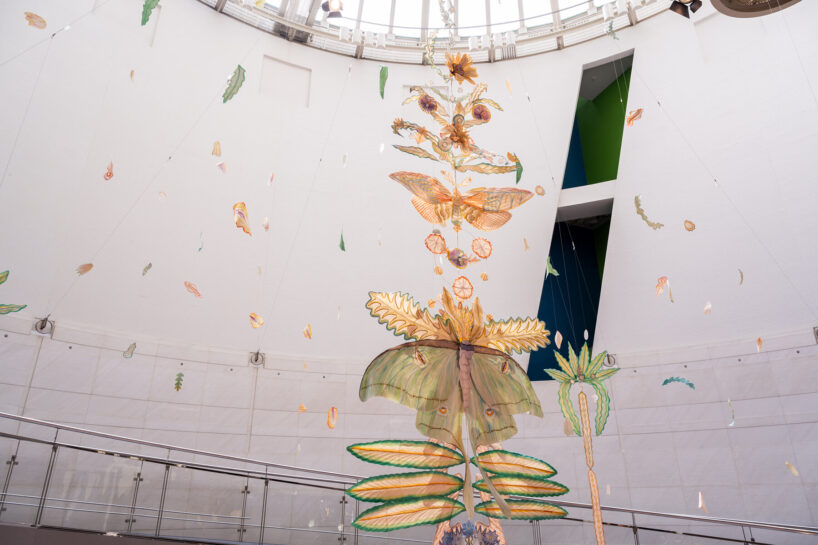
all images courtesy of Mona Sugata | Tree of Life — A Planet of Playing Beings
delicate forms rooted in sacred cycles
Japanese artist Mona Sugata works with untreated cotton, glue, and diluted pigments, allowing the fabric to absorb and bleed color. Once dry, the pieces are shaped and detailed using a heated iron tool to burn fine vein-like lines into the surface. ‘This is the moment when life begins to inhabit the work,’ she reveals. Sugata avoids coating or overworking the surface in order to preserve the softness of the materials and the natural shifts in tone, resulting in a surface that feels more like something in a slow state of becoming instead of a finished object.
Pillar of Prayer Kumade and Pillar of Prayer Purple Star, some of her latest works, are rooted in the Japanese jichinsai, a ceremony performed before construction, where offerings are made to the local land deity. The artist imagines these sculptures as vertical structures that remain after such a ceremony, linking the land and its inhabitants. The ceramic base represents the land god, while the plant forms growing from it reflect a relationship of coexistence, between what is built and what is already there. ‘It expresses the idea of sacred plants living on the god of the land and living in beautiful coexistence,’ Sugata notes.
Tree of Life — A Planet of Playing Beings, installed at the atrium of the Spiral art center in Tokyo, reflects Sugata’s idea of the Earth as an active field shaped by invisible beings, bacteria, insects, and other non-human lives. ‘Even after death, life becomes part of other beings, undergoing a perpetual cycle of rebirth and rebirth,’ she says. The work evokes these cycles through layered organic forms that spiral outward in motion, resembling a kind of visual system for life as play, disappearance, and return.
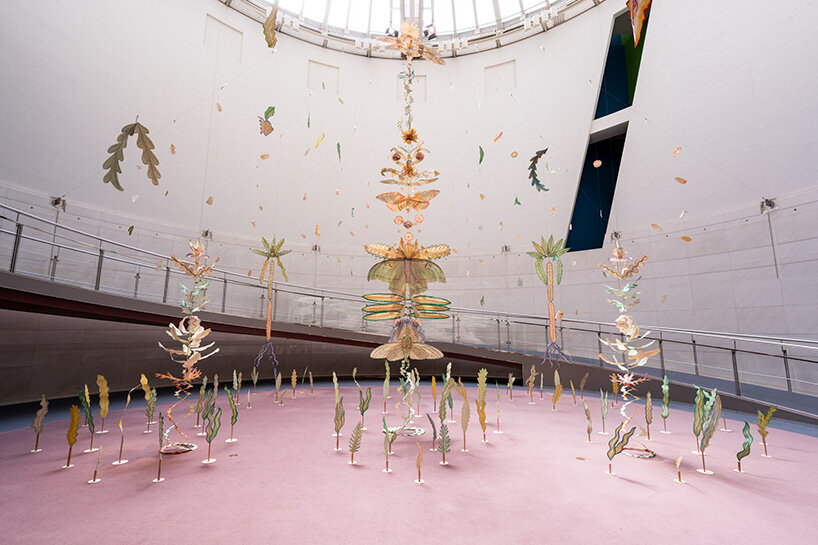
reflecting Sugata’s idea of the Earth
A Practice Shaped by Sensitivity and Direct Contact
Sugata’s approach is shaped by physical sensitivity rather than strict planning. She adjusts the process depending on the direction of each piece, working by feel rather than concept. ‘If I feel tension or resistance in my body, I take it as a sign that something is off,’ she explains. The final step, using the iron to create form, is done by hand and involves direct contact with heat, often leading to burns. Still, she treats these traces as part of the work itself, as reminders of material resistance, timing, and repetition.
Mona Sugata was born in Tokyo in 1983 and studied printmaking at Tama Art University. That background still informs her handling of surface and tone, but her installations move away from printed images into something more spatial and responsive. ‘My works are not for interpretation,’ she highlights. ‘They are for quiet encounters.’
Sugata hopes viewers will encounter something of their own in her work. ‘In such stillness,’ she reflects, ‘one might sense a deeper connection, with the world, with others. And in that resonance, I too receive something essential.’
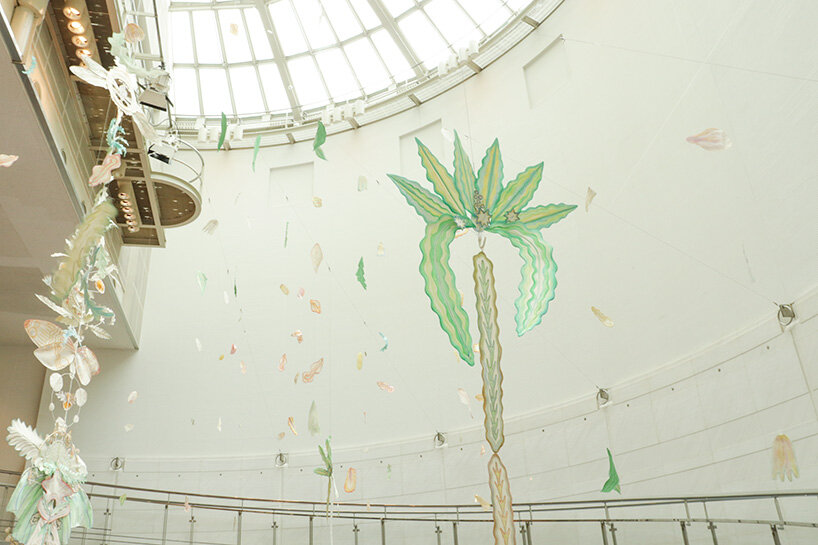
an active field shaped by invisible beings, bacteria, insects, and other non-human lives
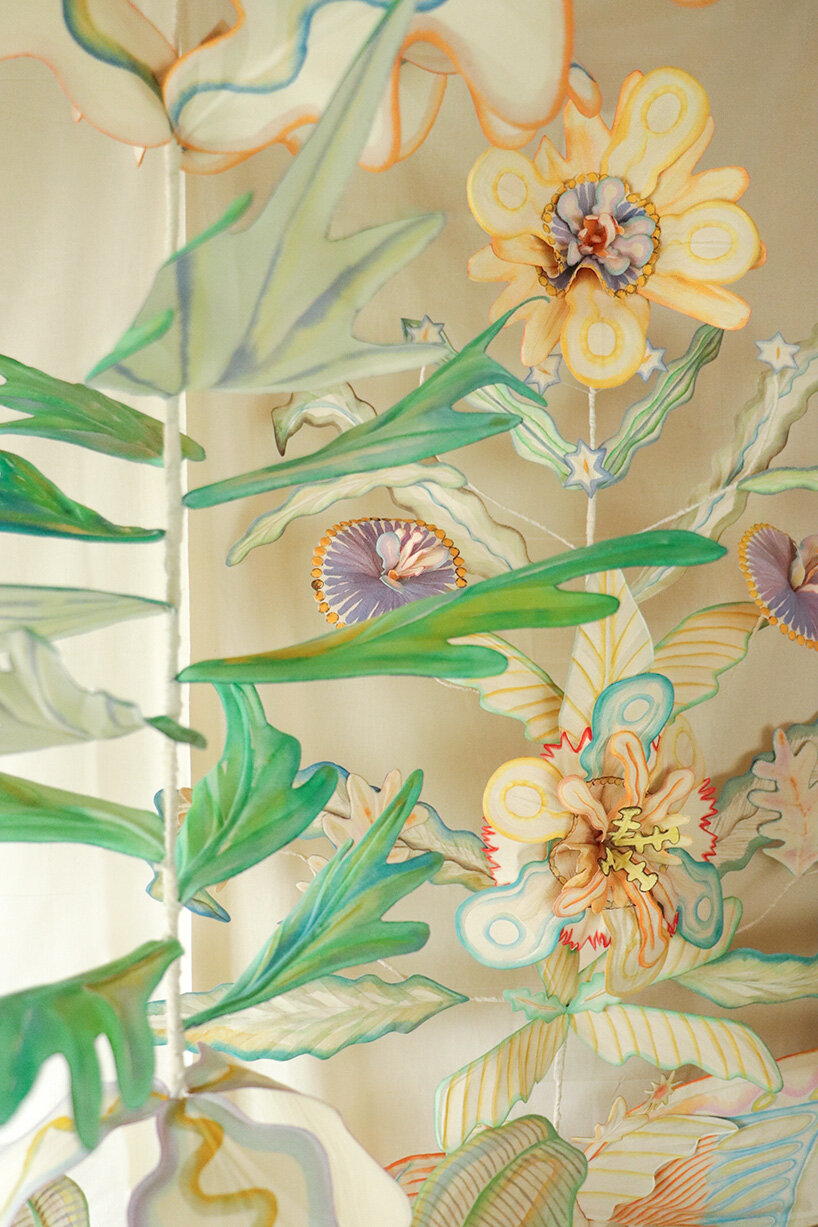
Mona Sugata works with untreated cotton, glue, and diluted pigments
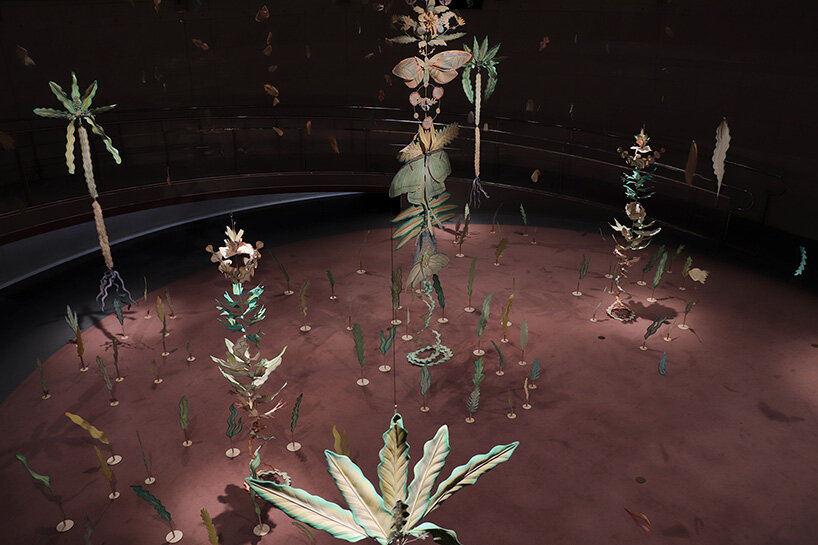
a kind of visual system for life as play, disappearance, and return

